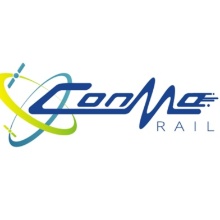Efficient Sensor-Based Condition Monitoring Methodology for the Detection and Localization of Faults on the Railway Track (ConMoRAIL)
Project Objectives
The aim of this project is to develop a methodology for efficient track fault detection to support intelligent, condition-based maintenance planning that will prevent infrastructure damage while increasing safety and reducing maintenance costs. The monitoring system should be cost-effective, board-autonomous and permit-free (it should not require special authorization from the German railway regulatory authorities), and can be installed on vehicles for use during regular service, so that continuous recording of the track condition is possible. The continuous measurements will allow for the development of scientific methods that will be used to define the quality of the track, detect and classify railway defects by using ML algorithms. Additionally, the same multi-sensor system will synergistically be used to efficiently localize and spatially and temporally separate the identified defects.
Localization of Track Faults
Within this project the IIGS focuses on implementing a sensor fusion algorithm by using filter algorithms such as an Unscented or Extended Kalman Filter. The sensor fusion is based on multi-band GNSS and IMU measurements, and will consider temporal correlations by a shape-filter-like UKF extension. Another step is to implement a data model and a relational database based on available map data. This will serve as a digital track map that will be integrated in the algorithm. This track map will be refined and updated with time schedules as well as maximum and average speeds. This is not only necessary for a reliable and accurate localization of a certain fault, but also for the spatial separation of overlapping faults.
Track Fault Detection
Besides the localization of a certain fault, the focus of the IEV is to detect and identify the track geometrical irregularities and structural defects, considering the vehicle’s dynamic behavior and its impact on the collected signals. This approach will include algorithms from machine learning as well as dynamical systems and control theory to develop a hybrid processing methodology. Different supervised learning algorithms will be implemented based on these behaviors to detect and classify the track faults, allowing their performance and results to be compared.
Project Partners
- Institute of Railway and Transportation Engineering, University Stuttgart
(https://www.iev.uni-stuttgart.de/) - Institute of Engineering Geodesy, University Stuttgart
The project is conducted in cooperation with the Württembergische Eisenbahn Gesellschaft (WEG, https://www.weg-bahn.de/).
Project Duration
April 2023 – March 2026
Publications
Fernández-Bobadilla, H. A., Martin, U. (2023): Modern Tendencies in Vehicle-Based Condition Monitoring of the Railway Track. IEEE Transactions on Instrumentation and Measurement, vol. 72, pp. 1-44, 2023, Art no. 3507344, https://doi.org/ 10.1109/TIM.2023.3243673
Lerke, O., Bahamon-Blanco, S., Metzner, M., Martin, U., Schwieger, V. (2021): Vorarbeiten zur Entwicklung eines Gleisfehlerdetektionssystems mit Regelzügen und Low-Cost Sensorik. ZfV, Vol. 146, No. 3 (2021). https://doi.org/10.12902/zfv-0339-2021





